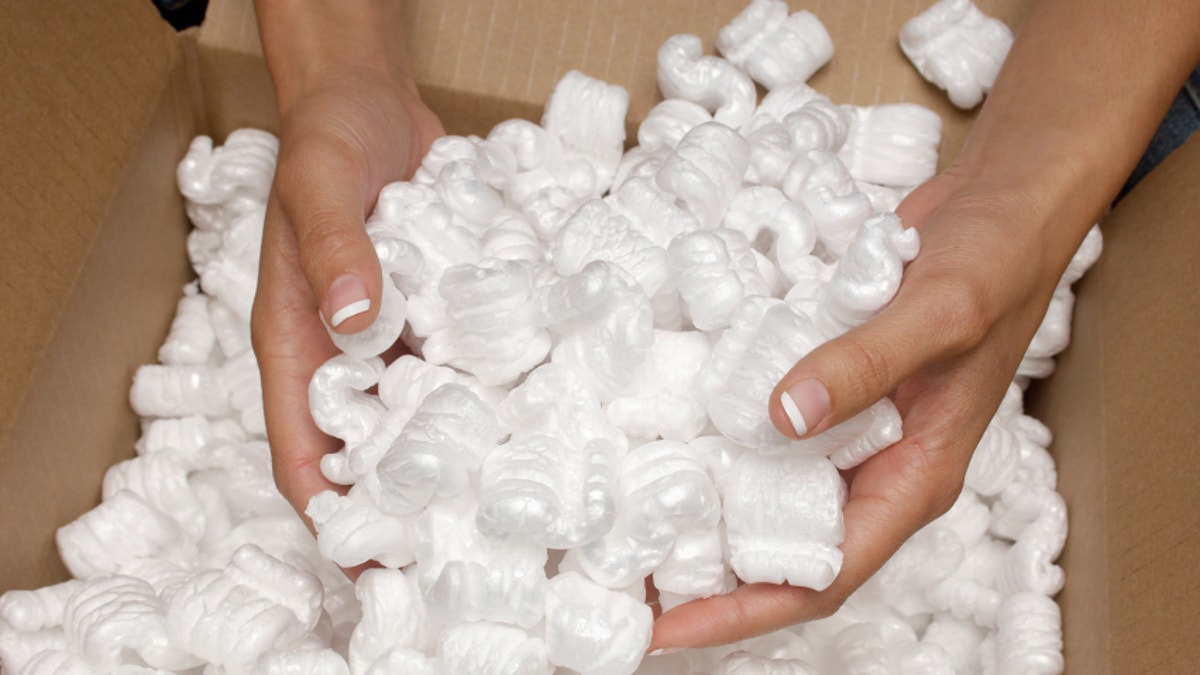
Woman holding heap of packing peanut, close-up of hands (Copyright 2008, Mike Watson Images Limited.)
There’s just something…weird about foam packaging, technically called polystyrene. You know what I mean - the white, squishy, tough, noisy, and seemingly ubiquitous material used to hold everything from soup and coffee to furniture, toys, and electronics. You might have heard it’s bad for the Earth, but recent research has shown it might be bad for the people populating the Earth, too.
To review: polystyrene is a lightweight, petroleum-based plastic with very good insulation properties. It is not biodegradable, meaning it can take several decades to hundreds of years for it to deteriorate in the environment or in a landfill. According to Earth Resource Foundation (ERF), an environmental educational non-profit organization, polystyrene is also notorious for breaking up into pieces that choke animals and clog their digestive systems.
I believe the health hazards to humans are equally concerning, if less widely known. The International Agency for Research on Cancer (IARC) classifies styrene, the main component of polystyrene, as possibly carcinogenic to humans. Other studies have shown that styrene may leach out of polystyrene food containers into the substances they contain, particularly hot beverages. Chronic exposure to styrene has been linked to headache, fatigue, depression, hearing loss, leukemia and lymphoma, according to the U.S. Environmental Protection Agency.
Most recently, The National Research Council also concluded that styrene is “reasonably anticipated to be a human carcinogen” – meaning that while there is some scientific evidence that styrene could cause cancer, there may be “alternative explanations” like chance, bias, or other unknown factors, as the panel of experts notes in their report.
And yet, polystyrene use persists. The U.S. Food and Drug Administration says it is safe. This is a perplexing position: a substance used to produce numerous products that is suspected to be possibly harmful to humans, that has been linked to health problems, and that threatens our environment remains widely used in products in everyday life. I don’t know about you, but just the suggestion of harm is enough for me to want to steer clear of something, whether a food, product, or lifestyle habit.
Luckily, change seems afoot, at least in some venues. Late last year, the New York City Council passed legislation banning plastic foam food service containers, cups, and packing materials. The ban is scheduled to go into effect on July 1, 2015, but plastic-foam producers have until January 1 of next year to prove their products can be recycled in a reasonably safe and economically feasible way. Just a few weeks ago, Washington, DC followed suit when its mayor signed a bill banning the use of plastic foam food containers in the Nation’s Capital. Seattle and San Francisco have also previously banned such products, citing environmental concerns.
On a smaller – but no less significant – scale, Hackensack University Medical Center, which is home to The Deirdre Imus Environmental Health Center, in 2013 replaced foam-based food containers with environmentally responsible cups, bowls and plates in all its cafés campus-wide. In doing so, the hospital reaffirmed its commitment to providing patients the healthiest environment possible for healing, while also striving to improve the health and ecological consciousness of staff and visitors.
It’s a small step, but the implications are huge. If other medical centers around the country do the same, or if patients go home and decide to ban polystyrene from their own lives, the industry will hear their consumers, and will be forced to make positive changes. Until then, replace such products with environmentally friendly alternatives that are biodegradable, made from renewable resources, and easily recycled.
Note: Information provided herein is not intended to treat or diagnose any health condition. As always, consult your healthcare provider with any questions or health concerns.




















